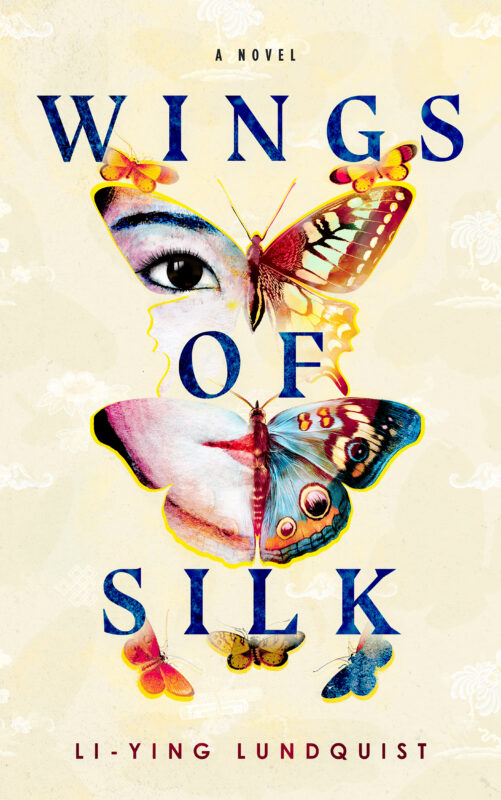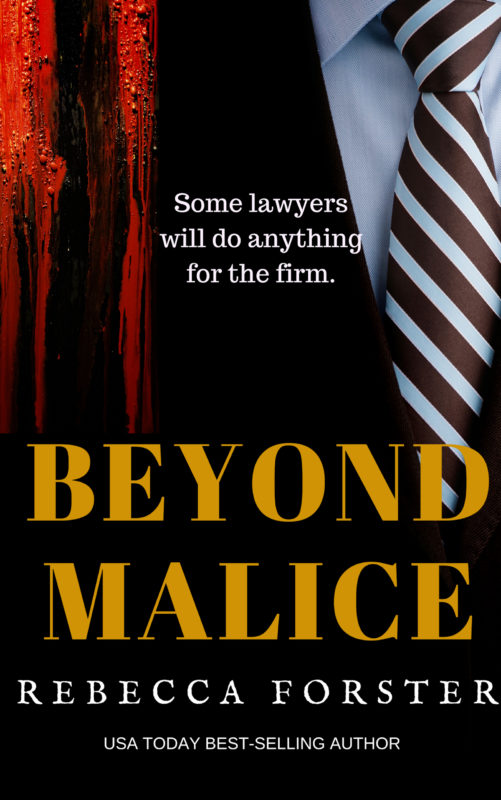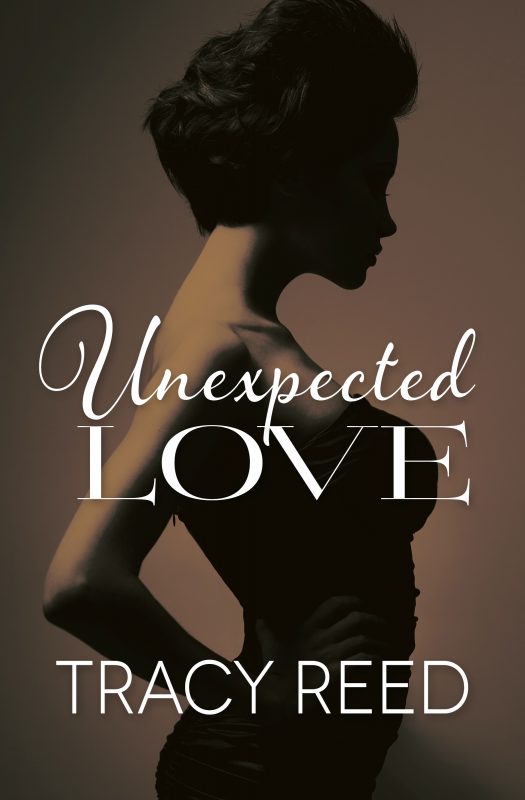CONFERENCE PREP Part Four
December 5, 2023 by Tracy Reed in category Pink Pad by Tracy ReedHappy holidays. Let’s finish up this series with the sales.
This was my first mega signing and therefore I had no idea what to expect. It was also the inaugural Steamy Lit Conference and mega signing. No one really knew what to expect. This was a huge event. Think Book Bonanza but slightly smaller and you will have an idea of what this event was like.
On a side note the energy was amazing. If you ever get the opportunity to attend as either a signing author or reader, go. It was fun being amongst like minded people who understand your love of books.
I don’t think any of the authors knew what to expect sales wise from this conference. Prior to the event I asked God for an abundance of sales. Did I sell out? No. Did I earn back all of my expenses? No. Based on the size of the event, I really thought I would sell out. My expectations were wrong, because I’m a relative unknown author. The sales I received were mostly from new to me readers which is very good. I am very grateful for the sales I made because I have new readers I don’t think I would have gotten if it hadn’t been for this conference.
Did I discount my books?
How much to sell your books for at signings is always a tricky question. I did a lot of research from previous authors on this subject. I also stalked every pre-order I could find for event signing pricing. What price to sell your books for is something only you can answer. I chose not to discount my books and I’m glad I didn’t. I write a mix of large and small books. I felt I would be doing myself a disservice by discounting my books.
In speaking with some readers they informed me, they don’t expect to get discounts or freebies. They come to the conference prepared to spend money. I tried to find out how much they had spent, but I was politely told, “you don’t need to know that”. I learned if a reader is interested in your book, they will buy it no matter the price. If you have an exclusive hardcover or boxset and they like it…they will buy it. I saw readers buy VERY pricey exclusives and not blink. The readers I spoke to said, if they like a book or series, they’ll buy it in every iteration available.
This leads to another area for future book signings….Exclusives. Since I’m doing SLC 2024, I’m already thinking about exclusives and hardcovers to take. Now that I know what readers expect, I better able to prepare. I’m also working on building my name recognition to increase my sales.
Was this event a financial failure?
No. This was the most profitable signing event for me. I also gained new subscribers, met some nice readers and sold some books. I got some valuable input from readers. I discovered some new authors to read, made some new friends, industry professionals and gained some publishing knowledge.
Will I do a mega signing again?
Of course. I like meeting with new readers and I like doing signings.
However, when it comes to signings, I am limiting the number of signings I do per year because it’s a lot of work and expensive. Ideally, I would like to do a signing a quarter. Two local and two out of town, but nothing is etched in stone. I could change my mind and sign up for more signings.
I hope this series has been helpful. If I missed something or you have some signing tips, please share them.
See you next year when I recap my quest to increase my mailing list.
Au revoir.
Top Ten Popular Holiday Toys from the 1960s
December 3, 2023 by Janet Elizabeth Lynn and Will Zeilinger in category Partners in Crime by Janet Elizabeth Lynn & Will Zeilinger tagged as 1960s Research, 1960s Toys, Christmas, working writers
I thought it would be fun to look back at the popular toys given for the holidays during the 1960s. This research brought back a flood of memories as both receiving them for gifts and buying them for the younger ones in my family. Hope you enjoy this walk down memory lane, also.

1. Army Men, or plastic soldiers of unbreakable plastic commonly molded in olive green. In the early 1950s Louis Marx and Company sold bagged or boxed sets of plastic military figures and accessories called play sets. Dressed in modern military uniforms and armed with WWII weapons, these army men were sold at low prices in discount stores and supermarkets.
Note: The makers of the green army men announced that army women would be sold in 2020. Gummy army men candy is now also available.


2. Die-cast metal toys High quality collectible, metal toys were produced using the die casting method, i.e. putting molten lead or zinc alloy in a mold to make a particular shape. Such toys are made of metal, with some parts made of plastic, rubber, or glass.
Dinky Toys was the brand name for a range of diecast, zinc alloy miniature vehicles produced by Meccano Ltd. They were made in England from 1934 to 1979, at a factory in Binns Road in Liverpool.
3. Barbie Doll spin-offs Mattel introduced Skipper Roberts in 1964 as Barbie’s younger sister. It made quite a splash in the Barbie doll world. More “friends” were introduced as the years went on.


4. Hamilton’s Invaders by Remco was a 1964 series of plastic toys modeled after giant insect type monsters, toy soldiers and vehicles. The line was marketed on television during the early 1960s.
4. Hamilton’s Invaders by Remco was a 1964 series of plastic toys modeled after giant insect type monsters, toy soldiers and vehicles. The line was marketed on television during the early 1960s.


6. The Easy-Bake Oven is a working toy oven introduced by Kenner Products in 1963, and later marketed by Hasbro. The original toy used a pair of ordinary incandescent light bulbs as a heat source. Kenner sold 500,000 Easy-Bake Ovens in the first year of production.
7. G.I. Joe is produced by Hasbro in 1963. Initially the figurines represented the four branches of the U.S. armed forces and later on, the Action Nurse. Their marketing focused on the term “action figures” vs “doll” because boys did not play with dolls. Thus, the word “doll” was never used by Hasbro or anyone involved in the development or marketing of G.I. Joe “Action Figures.”


8. By 1964, sales of Batman Merchandise had fallen drastically. Editor Julius Schwartz was assigned to the Batman titles. He presided over drastic changes, which was a “New Look”. Schwartz introduced changes designed to make Batman more contemporary. The Batmobile was redesigned, and Batman’s costume was modified to incorporate a yellow ellipse behind the bat-insignia. More slight modifications followed when the Batman television show debuted in 1966.
9. Kiddles were small dolls originally produced by Mattel. They were introduced at the1966 New York Toy Fair and put on the market soon after. At only three inches tall, they were tiny by conventional doll standards. The sensation they created in the toy world caused other toy companies to produce their own tiny dolls.


10.Disneyland Plastic figurines of Mickey Mouse, and Donald Duck were only available at Disneyland theme park until the advent of Disney World and the Disney mall stores in 1987.
What toys do you remember from the 1960s?
Books by Janet and Will
Featured Author: Bethlehem Writers Group, LLC
December 1, 2023 by Bethlehem Writers Group in category Apples & Oranges by Marianne H. Donley, Contests, Featured Author of the Month tagged as #TheBWG, 2024 Short Story Award, Bethlehem Writers Group, Bethlehem Writers Roundtable Short Story Award, Fur Feathers and Scales, new release, Short Story Award
About Bethlehem Writers Group, LLC
The Bethlehem Writers Group, LLC (BWG), is a community of mutually supportive fiction and nonfiction authors based in Bethlehem, Pennsylvania. The members are as different from each other as their stories. BWG also publishes quality fiction through their online literary journal, Bethlehem Writers Roundtable, and their award-winning A Sweet, Funny, and Strange Anthology series.
Each anthology has an overall theme—broadly interpreted—but includes a variety of genres. All but the first anthology include stories from the winner(s) of The Bethlehem Writers Short Story Award.
Their first anthology, A Christmas Sampler: Sweet, Funny, and Strange Holiday Tales (2009), won two Next Generation Indie Book Awards: Best Anthology and Best Short Fiction.
An Element of Mystery: Sweet, Funny, and Strange Tales of Intrigue is the latest in A Sweet, Funny, and Strange Anthology. This anthology was a finalist in both the 2023 Next Generation Indie Book Award and the 2023 Killer Nashville’s Silver Falchion.

About An Element of Mystery
The Bethlehem Writers Group is pleased to present this collection of tales of mystery and intrigue—the latest in its award-winning series of Sweet, Funny, and Strange® anthologies. From classic whodunnits to tales of the unexplained, each of the twenty-three stories contained herein have an element of mystery that will keep you guessing and wanting to read just one more story.
We’re thrilled to have old friends, but new members of BWG, join us this year. Award-winning author Debra H. Goldstein favors us with a mystery set among volunteers at a synagogue entitled “Death in the Hand of the Tongue,” while “Sense Memory,” by the multi-talented Paula Gail Benson, brings a delightful mix of mystery and the paranormal that helps a young couple find their way to each other.
In addition, we are happy to bring you the winning stories from two of our annual Bethlehem Writers Roundtable Short Story Award competitions: “Good Cop/Bad Cop” by Trey Dowell (2021 winner) and “The Tabac Man” by Eleanor Ingbretson (2022 winner).
You’ll also find stories from your favorite BWG authors, including Courtney Annicchiarico, Jeff Baird, Peter J Barbour, A. E. Decker, Marianne H. Donley, Ralph Hieb, DT Krippene, Jerry McFadden, Emily P. W. Murphy, Christopher D. Ochs, Dianna Sinovic, Kidd Wadsworth, Paul Weidknecht, and Carol L. Wright.
So get ready to be mystified . . . or intrigued!
Next up for BWG

BWG is working on their eighth anthology, Season’s Readings: More, Sweet, Funny, and Strange Holiday Tales.
In connection with this anthology, they are hosting The Bethlehem Writers 2024 Short Story Award.
The 2024 Short Story Award opened on January 1, 2024. The theme will be Holiday Stories (broadly interpreted).
BWG is seeking never-published short stories of 2,000 words or fewer. First Place will receive $250 and publication in their upcoming anthology: Season’s Readings: More, Sweet, Funny, and Strange Holiday Tales or in Bethlehem Writers Roundtable.
The final judge of the 2024 Short Story Award is Marlo Berliner, the multi-award-winning, bestselling author of The Ghost Chronicles series.
Books from Bethlehem Writers Group, LLC
Detachment
November 30, 2023 by Dianna Sinovic in category Quill and Moss by Dianna Sinovic, Writing tagged as flash Fiction, grief, loss, recovery
Leaves, leaves, and more leaves—the fall chore overwhelmed Kelsie each year, ever since she’d lost Tanner. It wasn’t the yardwork that ate at her, but more the season, the slide from a glorious summer into an end-of-growing-things autumn, followed closely by the chill of winter, when everything was either dead or in a deep sleep. That inevitability reminded her she’d been powerless to stop Tanner’s death—once the cancer was diagnosed, he’d had exactly three months left, those three months falling during a turbulent autumn.

Her friends worried for her. “Five years out, you should be bouncing back,” they said. “He would want you to live your life, not stay buried in grief.”
But they didn’t know—hadn’t known—her brother. After their father, and then their mother had died, Tanner had been her lifeline. For that bittersweet decade after their deaths, he had served as her confidant when her personal relationships soured. He’d always, always led her toward the positive, even after he got sick.
“You’re a tough woman,” he’d said when she expressed doubt that she could carry on without him. “You’ll survive. That’s what we do. All of this loss makes you strong.”
But she knew different. Loss left holes. Large ones that couldn’t be filled, no matter how many days, weeks, or years passed. Couldn’t be filled, no matter how many dead leaves you stuffed into them.
And so Kelsie raked. The piles grew, and she allowed the ache in her arms and shoulders and back to counter the pain in her soul. Her thoughts butted up against the endless question: Why had she been spared? Tanner should have lived, not her; even after all this time, she was still not up to the task of facing her life alone.
When the sun sank below the trees, she put up the rake and went indoors for a hot mug of hard cider and a hearth fire. She dozed in her chair, hearing over the crackle of the flames the wind gusting. I should have moved the leaf piles into the woods. Now they’ll be scattered.
The following morning, Kelsie pulled on her jeans, boots, and sweater to tackle another round of yard work. Glancing out the bedroom window, she stepped closer to the glass, to better see.
The wind—or something—had indeed moved the leaves, but instead of scattering them, they were arranged on the grass in a pattern, one that spelled a name: hers.
“Tanner,” she whispered, feeling suddenly lighter. The darkness within her retreated with the day’s full sunlight. “Thank you.”
Books with more of Dianna’s stories
Neetu Malik: Featured Author
November 29, 2023 by Neetu Malik in category Featured Author of the Month tagged as Featured Author of the Month, Neetu Malik, Poet's Day, poetry

Neetu Malik’s poetry is an expression of life’s rhythms and the beat of the human spirit. She draws upon diverse multicultural experiences and observations across three continents in which she has lived. She has contributed to The Australia Times Poetry Magazine, October Hill Magazine, Prachya Review, among others. Her poems have appeared in The Poetic Bond Anthology V and VI published by Willowdown Books, UK, NY Literary Magazine’s Tears Anthology and Poetic Imagination Anthology (Canada).
Her poem, “Soaring Flames”, was awarded First-Place by the NY Literary Magazine (2017). She has also been nominated for the Pushcart Prize, 2019 for her poem “Sacred Figs” published by Kallisto Gaia Press in their Ocotillo Review in May, 2018.
Neetu lives in Pennsylvania, USA.
You can find Neetu’s poetry in these volumes.
Hover on the cover for buy links. Click on the cover for more information.
Affiliate Links
A Slice of Orange is an affiliate with some of the booksellers listed on this website, including Barnes & Nobel, Books A Million, iBooks, Kobo, and Smashwords. This means A Slice of Orange may earn a small advertising fee from sales made through the links used on this website. There are reminders of these affiliate links on the pages for individual books.
Search A Slice of Orange
Find a Column
Archives
Featured Books
BECKONED, PART 1: FROM LONDON WITH LOVE
The regret of missed opportunity...
More info →SEAGROVE SECRETS
With Shayla Harrison's dangerous ex leaving rehab and headed her way, she needs to find a safe house and fast.
More info →UNEXPECTED LOVE
I can't believe I fell in love with my husband's best friend.
More info →Newsletter
Contributing Authors
Search A Slice of Orange
Find a Column
Archives
Authors in the Bookstore
- A. E. Decker
- A. J. Scudiere
- A.J. Sidransky
- Abby Collette
- Alanna Lucus
- Albert Marrin
- Alice Duncan
- Alina K. Field
- Alison Green Myers
- Andi Lawrencovna
- Andrew C Raiford
- Angela Pryce
- Aviva Vaughn
- Barbara Ankrum
- Bethlehem Writers Group, LLC
- Carol L. Wright
- Celeste Barclay
- Christina Alexandra
- Christopher D. Ochs
- Claire Davon
- Claire Naden
- Courtnee Turner Hoyle
- Courtney Annicchiarico
- D. Lieber
- Daniel V. Meier Jr.
- Debra Dixon
- Debra H. Goldstein
- Debra Holland
- Dee Ann Palmer
- Denise M. Colby
- Diane Benefiel
- Diane Sismour
- Dianna Sinovic
- DT Krippene
- E.B. Dawson
- Emilie Dallaire
- Emily Brightwell
- Emily PW Murphy
- Fae Rowen
- Faith L. Justice
- Frances Amati
- Geralyn Corcillo
- Glynnis Campbell
- Greg Jolley
- H. O. Charles
- Jaclyn Roché
- Jacqueline Diamond
- Janet Lynn and Will Zeilinger
- Jeff Baird
- Jenna Barwin
- Jenne Kern
- Jennifer D. Bokal
- Jennifer Lyon
- Jerome W. McFadden
- Jill Piscitello
- Jina Bacarr
- Jo A. Hiestand
- Jodi Bogert
- Jolina Petersheim
- Jonathan Maberry
- Joy Allyson
- Judy Duarte
- Justin Murphy
- Justine Davis
- Kat Martin
- Kidd Wadsworth
- Kitty Bucholtz
- Kristy Tate
- Larry Deibert
- Larry Hamilton
- Laura Drake
- Laurie Stevens
- Leslie Knowles
- Li-Ying Lundquist
- Linda Carroll-Bradd
- Linda Lappin
- Linda McLaughlin
- Linda O. Johnston
- Lisa Preston
- Lolo Paige
- Loran Holt
- Lyssa Kay Adams
- Madeline Ash
- Margarita Engle
- Marguerite Quantaine
- Marianne H. Donley
- Mary Castillo
- Maureen Klovers
- Megan Haskell
- Melanie Waterbury
- Melisa Rivero
- Melissa Chambers
- Melodie Winawer
- Meriam Wilhelm
- Mikel J. Wilson
- Mindy Neff
- Monica McCabe
- Nancy Brashear
- Neetu Malik
- Nikki Prince
- Once Upon Anthologies
- Paula Gail Benson
- Penny Reid
- Peter Barbour
- Priscilla Oliveras
- R. H. Kohno
- Rachel Hailey
- Ralph Hieb
- Ramcy Diek
- Ransom Stephens
- Rebecca Forster
- Renae Wrich
- Roxy Matthews
- Ryder Hunte Clancy
- Sally Paradysz
- Sheila Colón-Bagley
- Simone de Muñoz
- Sophie Barnes
- Susan Lynn Meyer
- Susan Squires
- T. D. Fox
- Tara C. Allred
- Tara Lain
- Tari Lynn Jewett
- Terri Osburn
- Tracy Reed
- Vera Jane Cook
- Vicki Crum
- Writing Something Romantic
Affiliate Links
A Slice of Orange is an affiliate with some of the booksellers listed on this website, including Barnes & Nobel, Books A Million, iBooks, Kobo, and Smashwords. This means A Slice of Orange may earn a small advertising fee from sales made through the links used on this website. There are reminders of these affiliate links on the pages for individual books.









































































